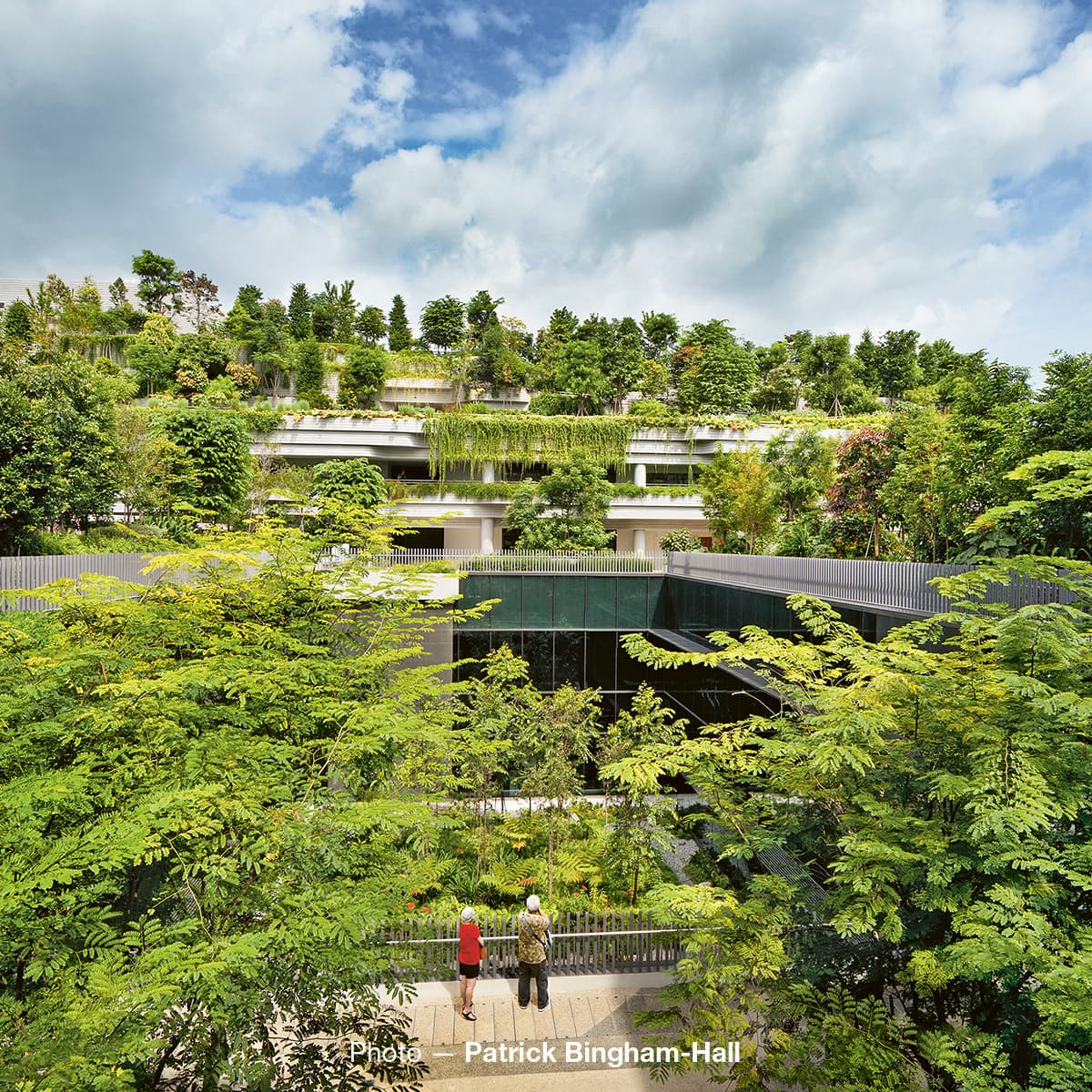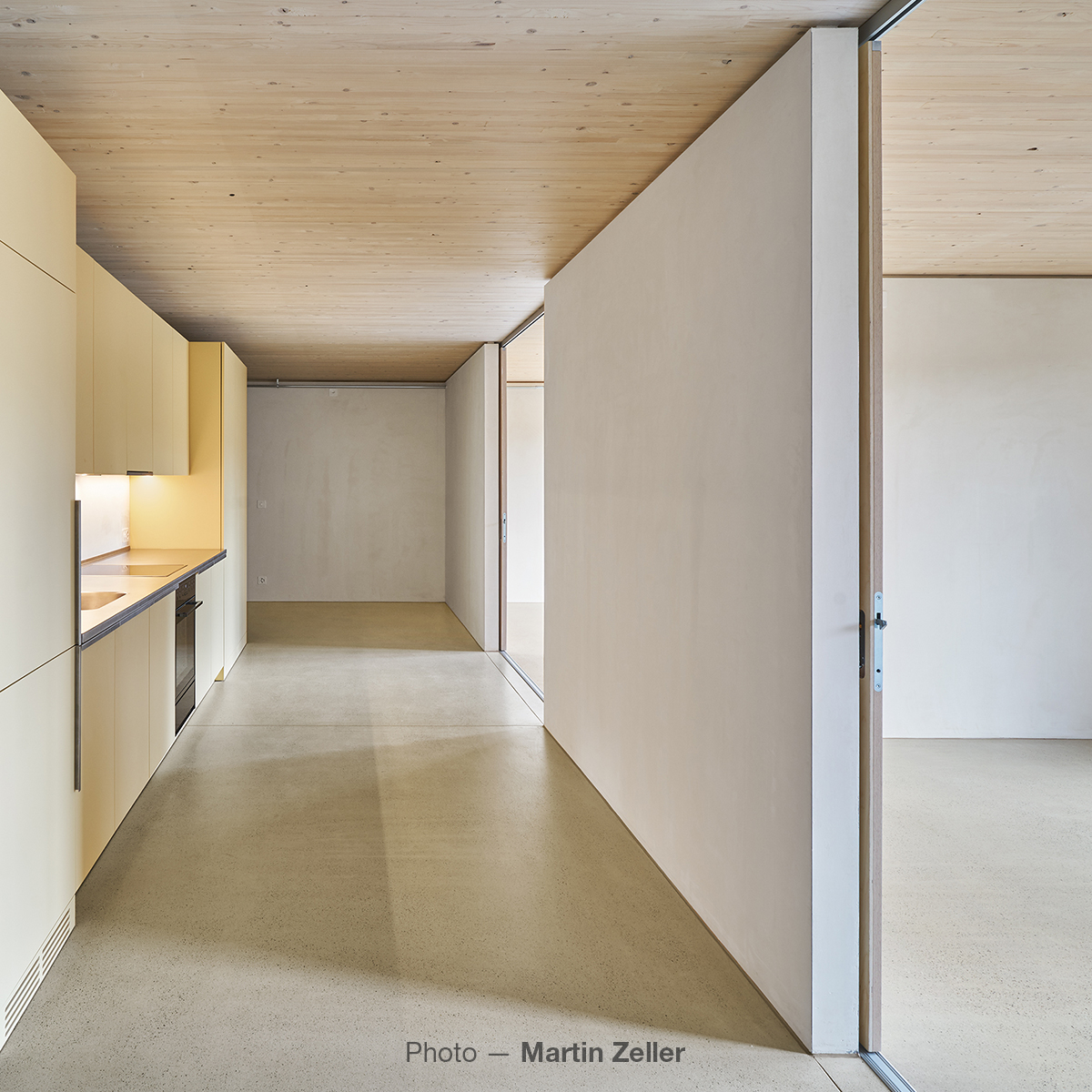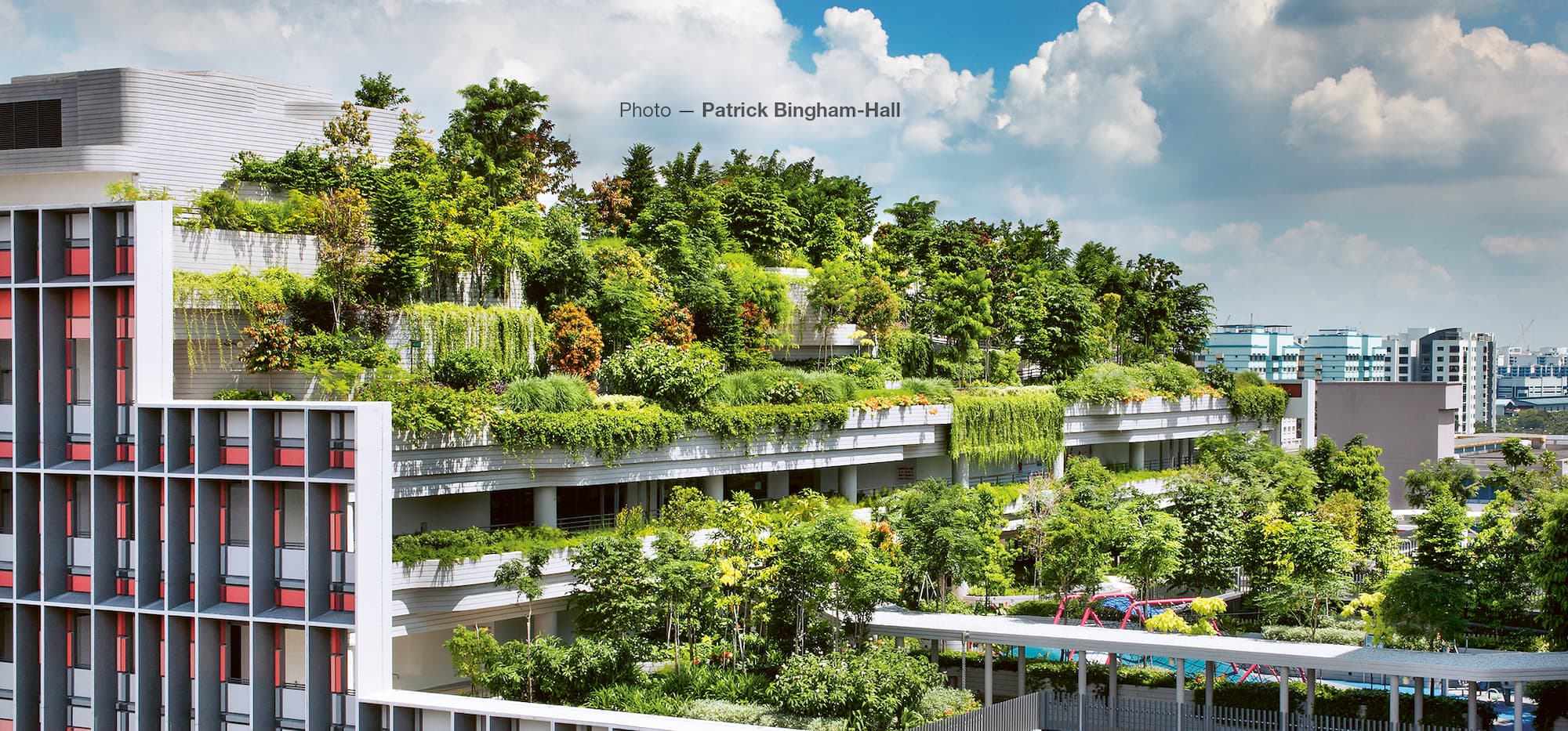“Senior housing can’t be exported 1:1”
They know how to provide the conditions for promoting social interaction in community housing for seniors: Pearl Chee from Singapore and François Höpflinger from Switzerland. In this double interview, they talk about the needs of older people and about cultural differences that exist in that context.
Interview partners
Pearl Chee is the Director of Woha Architects. She was the lead architect for Singapore's first senior housing development targeted at elderly residents, Kampung Admiralty. It is a village in a vertical, layered format which has all the necessary amenities close by.
François Höpflinger is titular professor of sociology and member of the steering committee of the Center for Gerontology at Zurich University. He is considered Switzerland's most renowned researcher on aging.

Ms. Chee, one of the goals of the senior living project in Kampung Admiralty is to facilitate social interaction. What measures did you take to achieve this?
Pearl Chee: “We provide communal areas where residents can meet and gather for events. But we have gone further than that. In order to get neighbors to talk to each other in the hallways, we committed a cultural sacrilege and built the apartment doors directly facing each other. You would not see this anywhere else in Singapore, as people here place a high value on privacy and don't want others to be able to see into their home. But relaxing individual privacy can also save lives. If you know your neighbor isn't feeling well, you'll look in on them and call for medical help if needed.”

So—did the arrangement of the doors have the desired effect?
Pearl Chee: “Yes, residents have accepted them, they understand their purpose and they talk to each other more.”
Mr. Höpflinger, are there universal architectural measures that promote social contact?
François Höpflinger: “Ideally, there are communal spaces and quiet areas for retreat. Plus garden areas that will attract people from the neighborhood to bring some life into the settlement and provide the opportunity for additional encounters.”
Does Kampung Admiralty represent the future of global senior living?
Pearl Chee: “In an ideal future, I would hope that most seniors would have access to a community like Kampung Admiralty, but it takes a lot of political will and cooperation between stakeholders to make a project like this happen.”
François Höpflinger: “Kampung Admiralty is a fantastic housing project. It is a showcase model for Asia. Whether it can be implemented one-to-one worldwide I am not so sure. With its vertical dimension, I doubt it would be to the taste of the majority of people in Switzerland.”
Would a Swiss senior citizen feel comfortable in Kampung?
Pearl Chee: “I think so, because although the facility is designed to encourage community and interaction, residents can choose the level of interaction and privacy that is right for them.”
François Höpflinger: “The Swiss are not used to living in high-rise buildings and have higher expectations when it comes to the size of their apartments. They would feel a bit cramped in Kampung. Senior housing can’t be exported 1:1.”
And vice versa, a kampung resident in a Swiss senior housing environment?
Pearl Chee: “I'm not sure a senior from Singapore would feel at home in Switzerland. We're used to living very densely in an urban environment, so if there were housing options in a similar context, then perhaps yes.”
François Höpflinger: “I can imagine that someone from Singapore might get bored in a Swiss retirement community. They would have to get used to organizing things for themselves. We Swiss are individualists, we like to do things on our own initiative, like travelling. While we do have activities where residents are invited to join by the management of the housing community, most seniors insist on individual pursuits as long as they are still fit.”

Ms. Chee, can the apartments be customized to meet the needs of the residents?
Pearl Chee: “They can. The apartments come in two sizes—45 and 60 square meters. In the larger ones, the bedroom walls can be moved, allowing changes to the floorplan, for example, a larger living room.”
In Singapore, old-age housing is organized by the state. Does this make planning a project like Kampung Admiralty easier?
Pearl Chee: “Yes, when the government supports a project like Kampung, it makes it easier to build a prototype like this.”
François Höpflinger: “Here in Switzerland, the bottom-up cooperative approach to senior housing is popular. This is anchored in our democratic tradition, but also causes projects to fail time and again. So I look to Singapore with a certain envy. On the other hand, their top-down approach would not be in line with Swiss DNA.”
How do you live? And can you see yourself move to a senior housing estate such as Kampung at some time in the future?
François Höpflinger: “I live in an apartment building with four apartments in Horgen on Lake Zurich. The tenants of three of these are retired folk. But at the top, three young people are sharing an apartment. I’d like to stay where I am and would prefer not to move elsewhere at my age. If a move does become necessary, there are a variety of retirement housing options in the community.”
Pearl Chee: “I grew up in a village community, a kampung. That's why I can easily see myself living in one again one day. It doesn't have to be in Kampung Admiralty. Since this has proved to be a successful prototype, the Singapore government has already announced that more projects of this type will be built throughout our island nation.
Author: Philippe Welti

Senior living
We are living longer and staying healthier too. That means that seniors can live independently into their old age—thus creating demand for new, age-appropriate housing worldwide. If we want to flexibly adapt living spaces to keep up with demographic developments, barrier-free buildings should be the rule.
Read article
Read more about "Inclusive Design" in our newsletter
Keep up-to-date with our current topics and the latest articles. Read about a project for senior living in Singapore and how we designed a barrier-free apartment in cooperation with a wheelchair user and an architect. Subscribe to our newsletter.
Subscribe now!
Age-appropriate apartments
The “Zusammenhalt” housing project compensates for small apartments with generous communal areas. The floor plans of the apartments can be transformed by sliding doors.
View reference project

